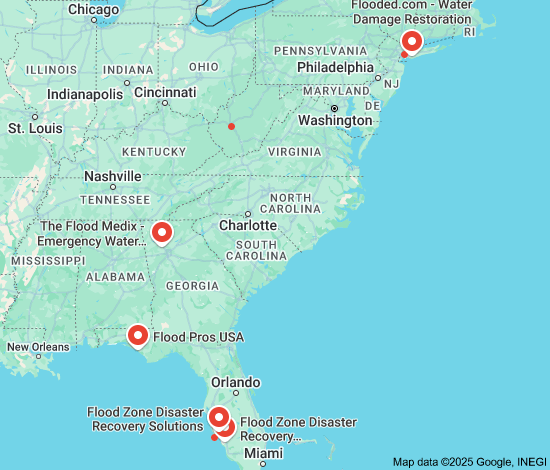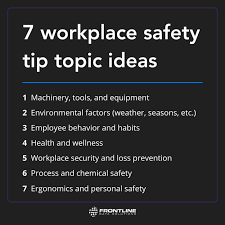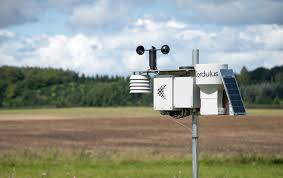The Essential Flood Recovery Tools You Need
Flooding can cause significant damage to homes and communities, making the recovery process challenging and overwhelming. Having the right tools at your disposal can make a big difference in restoring your property and getting back on your feet. Here are some essential flood recovery tools that can help you navigate through the aftermath of a flood:
Wet/Dry Vacuum
A wet/dry vacuum is a versatile tool that can help you remove standing water from your home quickly and efficiently. It is especially useful for extracting water from carpets, upholstery, and hard-to-reach areas.
Dehumidifier
After removing excess water, a dehumidifier can help dry out the remaining moisture in the air and prevent mold growth. Make sure to use a dehumidifier with enough capacity to cover the affected area.
Moisture Meter
A moisture meter is essential for detecting hidden moisture in walls, floors, and ceilings. By identifying areas with high moisture levels, you can target them for proper drying and prevent mold infestations.
Air Mover Fans
Air mover fans are designed to circulate air effectively, speeding up the drying process in flooded areas. Placing these fans strategically can help reduce drying time and minimize damage to your property.
Mold Remediation Products
In cases where mold growth has already started, it’s crucial to have mold remediation products on hand. These may include mold cleaners, disinfectants, and protective gear to safely remove mold from surfaces.
Personal Protective Equipment (PPE)
When engaging in flood recovery tasks, it’s important to prioritize safety by wearing appropriate PPE such as gloves, masks, goggles, and boots. Protecting yourself from contaminants and hazards is essential for a successful recovery process.
By having these essential flood recovery tools ready for use, you can effectively address the challenges posed by flooding and work towards restoring your home to its pre-flood condition.
Essential Tools for Effective Flood Recovery: 6 Tips to Restore Your Home
- Use water pumps to remove excess water from flooded areas.
- Invest in dehumidifiers to reduce moisture and prevent mold growth.
- Use wet/dry vacuums to clean up remaining water and debris.
- Have a sump pump installed to prevent future flooding in basements.
- Utilize fans for better air circulation and faster drying of affected areas.
- Consider using moisture meters to monitor the progress of drying processes.
Use water pumps to remove excess water from flooded areas.
Using water pumps to remove excess water from flooded areas is a crucial step in the flood recovery process. Water pumps are efficient tools that can quickly extract standing water, helping to prevent further damage to structures and belongings. By utilizing water pumps, you can expedite the drying process and create a safer environment for recovery efforts. Properly removing excess water with water pumps is essential for minimizing the impact of flooding and facilitating the restoration of affected areas.
Invest in dehumidifiers to reduce moisture and prevent mold growth.
Investing in dehumidifiers is a crucial step in flood recovery efforts as they play a key role in reducing moisture levels and preventing mold growth. By using dehumidifiers effectively, you can create a drier environment that inhibits mold spores from thriving, ultimately safeguarding your home from potential health hazards and structural damage. Prioritizing the use of dehumidifiers post-flooding can significantly contribute to a successful recovery process by promoting proper drying and ensuring a safer living environment for you and your family.
Use wet/dry vacuums to clean up remaining water and debris.
Utilizing wet/dry vacuums is a practical and efficient tip for flood recovery efforts. These versatile tools are essential for effectively removing remaining water and debris from flooded areas. By employing wet/dry vacuums, individuals can expedite the cleanup process, minimize water damage, and create a safer environment for further restoration work. With their ability to handle both wet and dry materials, these vacuums are invaluable assets in the aftermath of a flood, helping to restore affected spaces back to their pre-flood condition.
Have a sump pump installed to prevent future flooding in basements.
To prevent future flooding in basements, consider having a sump pump installed. A sump pump is a valuable tool that helps keep basements dry by efficiently removing excess water that may accumulate during heavy rains or floods. By proactively installing a sump pump, you can significantly reduce the risk of water damage to your basement and protect your property from potential flooding incidents. Investing in a sump pump is a proactive measure that can provide peace of mind and enhance the resilience of your home against future water-related challenges.
Utilize fans for better air circulation and faster drying of affected areas.
Utilizing fans for better air circulation is a crucial tip in flood recovery efforts. By strategically placing air mover fans in affected areas, you can promote faster drying of surfaces and reduce moisture levels, helping to prevent mold growth and further damage. The increased airflow facilitated by fans not only accelerates the drying process but also improves overall air quality, creating a more conducive environment for effective restoration work. Incorporating fans as part of your flood recovery toolkit can significantly enhance the efficiency and success of your recovery efforts.
Consider using moisture meters to monitor the progress of drying processes.
Consider using moisture meters to monitor the progress of drying processes during flood recovery. Moisture meters are valuable tools that can help you track the moisture levels in various surfaces and materials, allowing you to assess the effectiveness of your drying efforts. By regularly checking and monitoring moisture levels, you can ensure thorough drying and prevent potential mold growth, ultimately contributing to a successful flood recovery process.




